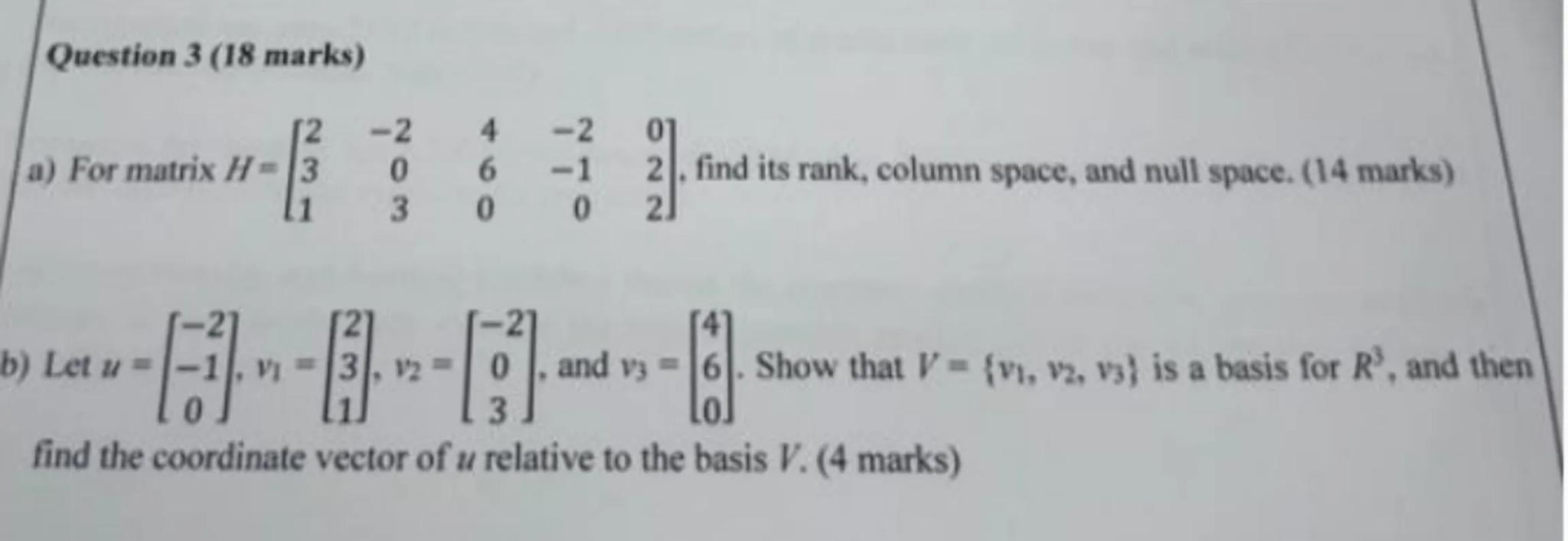
Sia

Question
Math
Posted over 1 year ago
Question 3 (18 marks)
a) For matrix , find its rank, column space, and null space. (14 marks)
b) Let , and . Show that is a basis for , and then find the coordinate vector of relative to the basis . ( 4 marks)

Answer from Sia
Posted over 1 year ago
Solution by Steps
step 1
To find the rank of matrix , we first need to reduce it to its row echelon form (REF)
step 2
The given matrix is:
We perform row operations to convert it to REF
step 3
Subtract times the first row from the second row:
step 4
Subtract times the first row from the third row:
step 5
Subtract times the second row from the third row:
step 6
The matrix is now in row echelon form. The non-zero rows are:
Thus, the rank of is 3
step 7
The column space of is the span of the pivot columns in the original matrix:
step 8
To find the null space, we solve :
From the REF, we get:
Thus, the null space is:
Answer
Rank: 3, Column space: span of , Null space: span of
Key Concept
Rank, Column Space, and Null Space of a Matrix
Explanation
The rank of a matrix is the number of linearly independent rows or columns. The column space is the span of the pivot columns, and the null space is the set of solutions to the homogeneous equation .
Solution by Steps
step 1
To show that is a basis for , we need to show that are linearly independent and span
step 2
The vectors are:
We form the matrix with these vectors as columns:
step 3
We find the determinant of to check for linear independence:
Expanding along the first row:
Since , the vectors are linearly independent
step 4
Since are linearly independent and there are 3 vectors in , they span . Thus, is a basis for
step 5
To find the coordinate vector of relative to the basis , we express as a linear combination of :
step 6
This gives us the system of equations:
Solving this system, we get:
Thus, the coordinate vector of relative to the basis is:
Answer
is a basis for , and the coordinate vector of relative to is
Key Concept
Basis and Coordinate Vectors
Explanation
A set of vectors forms a basis for a vector space if they are linearly independent and span the space. The coordinate vector of a vector relative to a basis is the unique combination of basis vectors that equals the vector.
Not the question you are looking for? Ask here!
Enter question by text
Enter question by image
Unlock Smarter Learning with AskSia Super!
Join Super, our all-in-one AI solution that can greatly improve your learning efficiency.
30% higher accuracy than GPT-4o
Entire learning journey support
The most student-friendly features
Study Other Question